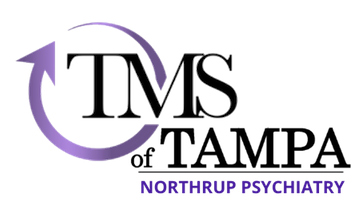Anxiety Treatment in Tampa, FL
Depression and anxiety disorders are different, but people with depression often experience symptoms similar to those of an anxiety disorder, such as nervousness, irritability, and problems sleeping and concentrating. But each disorder has its own causes and its own emotional and behavioral symptoms.
Many people who develop depression have a history of an anxiety disorder earlier in life. There is no evidence one disorder causes the other, but there is clear evidence that many people suffer from both disorders.
It's not uncommon for someone with an anxiety disorder to also suffer from depression or vice versa. Nearly one-half of those diagnosed with depression are also diagnosed with an anxiety disorder.
- Anxiety disorders are the most common mental illness in the U.S., affecting 40 million adults in the United States age 18 and older, or 18.1% of the population every year.
- Anxiety disorders are highly treatable, yet only 36.9% of those suffering receive treatment.
- People with an anxiety disorder are three to five times more likely to go to the doctor and six times more likely to be hospitalized for psychiatric disorders than those who do not suffer from anxiety disorders.
- Many people with an anxiety disorder also have a co-occurring disorder or physical illness, which can make their symptoms worse and recovery more difficult. It’s essential to be treated for both disorders.
- Obsessive-compulsive disorder (OCD) and posttraumatic stress disorder (PTSD) are closely related to anxiety disorders, which some may experience at the same time, along with depression.
- Anxiety disorders develop from a complex set of risk factors, including genetics, brain chemistry, personality, and life events.
- Anxiety disorders develop from a complex set of risk factors, including genetics, brain chemistry, personality, and life events.
Anxiety disorders are treatable, and the vast majority of people with an anxiety disorder can be helped with professional care. Several standard approaches have proved effective:
GAD is diagnosed when a person finds it difficult to control worry on more days than not for at least six months and has three or more symptoms. This differentiates GAD from worry that may be specific to a set stressor or for a more limited period of time.
GAD affects 6.8 million adults, or 3.1% of the U.S. population, in any given year. Women are twice as likely to be affected. The disorder comes on gradually and can begin across the life cycle, though the risk is highest between childhood and middle age. Although the exact cause of GAD is unknown, there is evidence that biological factors, family background, and life experiences, particularly stressful ones, play a role.
When their anxiety level is mild to moderate or with treatment, people with GAD can function socially, have full and meaningful lives, and be gainfully employed. Many with GAD may avoid situations because they have the disorder or they may not take advantage of opportunities due to their worry (social situations, travel, promotions, etc). Some people can have difficulty carrying out the simplest daily activities when their anxiety is severe.
Signs and Symptoms of GAD
- Feeling nervous, irritable, or on edge
- Having a sense of impending danger, panic or doom
- Having an increased heart rate
- Breathing rapidly (hyperventilation), sweating, and/or trembling
- Feeling weak or tired
- Difficulty concentrating
- Having trouble sleeping
- Experiencing gastrointestinal (GI) problems
SCHEDULE YOUR FREE CONSULTATION
